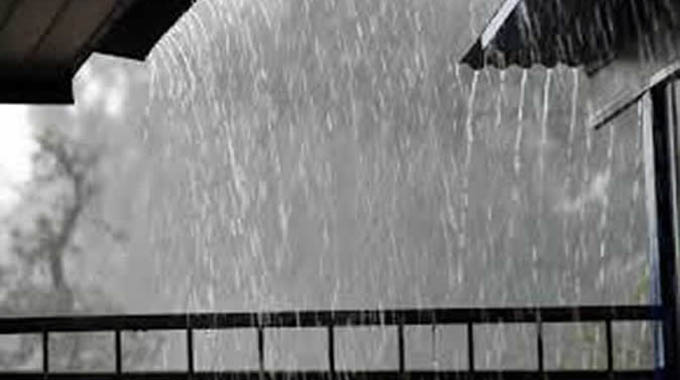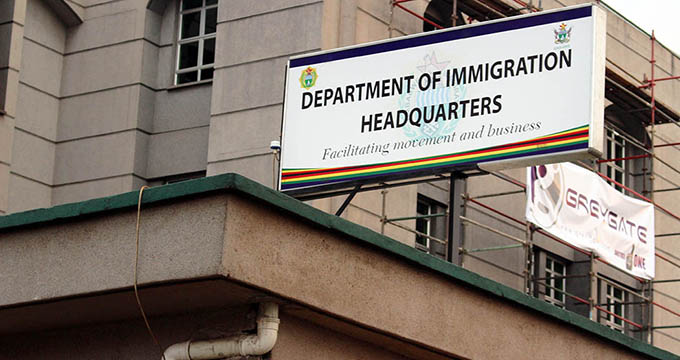EDITORIAL COMMENT : Good rains nourish smarter farming

The regional expert forecast that all of Zimbabwe should enjoy a normal to above normal rainy season, in both halves, means that we need to go all out to continue expanding our agricultural production including a more thoughtful mix of crops.
The fine tuning of the regional SADC forecast yesterday by the Zimbabwean Department of Meteorological Services, and the constant monitoring of actual rainfall and adjustment of detailed seasonal forecasts is important, but the general and most important factor is that Zimbabwe can have another bumper season, and it is a long time since we had normal seasons back to back.
There are, of course, many conditions to be met before we can start counting the harvest. But we know from the last seasons what needs to be done. The bulk of small-scale farmers were before last season trained in the new conservation farming methods and prepared their land early. In fact, both the training and preparation were conditions that had to be met before Agritex would certify the farmer was able to enter the input contract schemes.
This means a lot of farmers will be far better prepared in terms of skills since they now know that the new systems work and they have had the practical experience of a season in applying them.
Just the practical experience on top of the theoretical training means a jump in production since everyone understands what is needed and how it works.
But it also allows farmers to plant more if they can, since with decent rains coupled to the correct farming techniques they can be fairly certain of getting a return and increasing their profits. They also understand the need of field drainage and soil protection to reduce leaching losses and waterlogging, with the first being a significant problem.
The two critical ministries involved in inputs have been ensuring the suppliers are ready. The Ministry of Lands, Agriculture, Fisheries, Water and Rural Resettlement has been keeping close ties on seed supplies, including the need to import more soya bean seed, while the Ministry of Industry and Commerce has been in constant contact with the fertiliser companies, who need to mix local materials, imported raw materials and imported supplies to ensure there are enough bags of the correct types of fertiliser.
But other factors need to be thought through, including the mix of crops. Maize still dominates the summer grains since it remains the core of almost everyone’s diet, despite the efforts to see more return to traditional grains and a greater variety of food in our kitchens. But we need to think about just how much maize we need to grow.
We need to meet all Zimbabwean requirements, in both the total crop and in those parts of the harvest that farmers keep back for themselves and their families and the parts that they sell and which are processed by the milling companies. Growing a bit extra seems a good idea, to ensure that there are decent carry-over stocks on hand and in case the next season sees a really bad drought.
There might be some export markets, but with almost all of SADC expecting decent rains these will not be large in the region, and others can grow this high-volume low-value crop closer to a decent export port for world markets. So we need to keep an eye on just how much we expand maize production.
Traditional grains must continue to be pushed. We as a country and as a collection of families are over-reliant on a single grain and there are good grounds both for health, diet variety and insurance against bad seasons to see at least a partial return to pre-colonial diets. Maize only became the dominant staple in the 1920s; before then, say historians, it was more of a vegetable with most of the crop used for roasting fresh mealies rather than being stored for grinding.
But farmers need not be too wedded to food grains when it comes to planning. Zimbabwe is still seriously deficient in oil seeds, and the tables produced by the Reserve Bank of Zimbabwe on the auction allocations prove this; the cooking oil producers are clustered in the top ten importers and we have that curiosity that the Governor of the Reserve Bank has to worry about the market price of South American crude soya oil when he does his sums.
The growth in the cotton harvest has helped, since cotton seed should be prime source of raw materials. Already at least two major Zimbabwean processors are including cotton seed oils in one of their brands, the clue being the words “long lasting” since cotton-seed oil does not oxidise and so can be recycled through a fryer far more times. Soya and cotton-seed extraction methods are very similar, useful if your business is making cooking oil and margarine.
But we can quite easily boost our production of soya beans and sunflower, and we should remember that peanut oil is a premium product on the supermarket and specialist shop shelves in many countries. Soya requires more skill to grow than maize, but our farmers are seeing their skills boosted, and being a legume it is an extremely useful crop in any rotation system. Sunflower used to be a staple cash crop on many small farms, so most people know how to grow it.
With the growth in the national cattle herd and the premiums paid for top-class beef cattle, plus the major effort to push milk production beyond the 50 percent of national requirements that our farmers are stuck at, mean that opportunities exist for animal feeds, many of which are also useful for improving soil fertility and building up organic content.
There are a lot of new crops that can be used on almost every farm, but many farmers will need advice on just what is the best mix for their farm, regardless of size, Fairly obviously a range of crops is better environmentally and financially than near monocultures, but farmers should not have to guess over which varieties of which other crops suit their area best, and need advice and training.
At the same time we need to upgrade continuously our water storage and water retention. Dams are important but a lot of moisture can be held in the soil, making the next drought, and there will be one sometime, a lot less damaging.
Good seasons also encourage pests, and a pair of decent seasons back-to-back make that danger a lot worse, so we need to have the warning systems and the required chemicals in place. We see some of the problem with the present quelea outbreak; a decent summer season produced a lot of grass seed to build up the breeding flocks, and they bred to attack the wheat fields.
A forecast of a decent rainy season is no reason for us to relax. It simply means we can accelerate our production drive and ensure that smart farming becomes ever smarter far more quickly. And that requires a lot of work by experts and farmers.









Comments